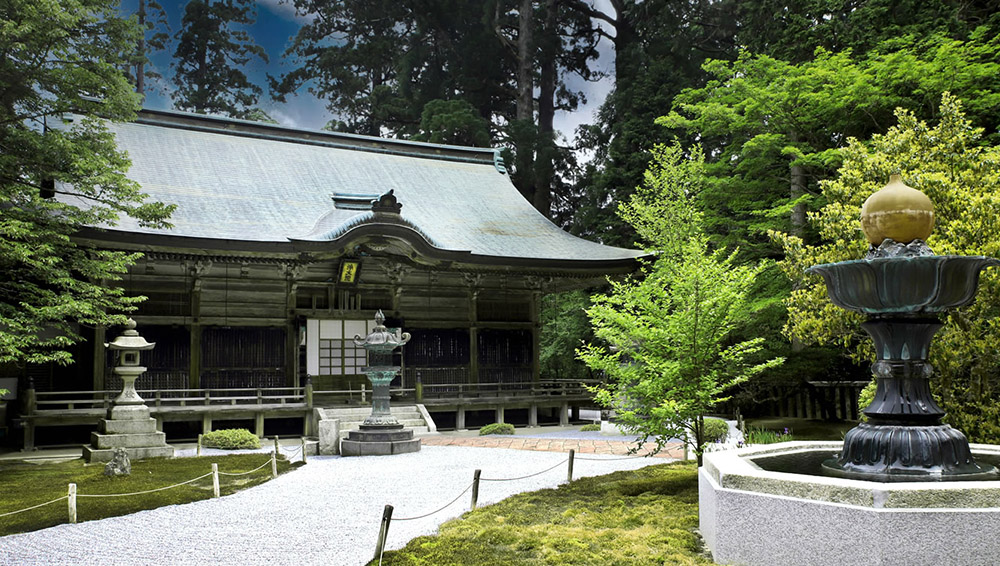Introduction
Enryakuji Temple, located on Mount Hiei in the eastern part of Kyoto, is one of the most important temples in the history of Japanese Buddhism and the headquarters of the Tendai sect. This mountain temple, with its profound historical significance, also attracts numerous visitors with its spectacular architectural complex and beautiful natural surroundings. This article will take you on an in-depth journey to discover the charm of this Buddhist sanctuary in Japan.
Key Information
- Founded in 788 AD
- Headquarters of the Tendai sect in Japan
- Located on Mount Hiei, on the border between Kyoto Prefecture and Shiga Prefecture
- Divided into three areas: Todo (East Pagoda), Saito (West Pagoda), and Yokawa
- Listed as a UNESCO World Cultural Heritage site
Historical Background
Enryakuji Temple was founded by Master Saicho in 788 AD and is the birthplace of the Tendai sect in Japan, which was introduced from China. At its peak, Enryakuji Temple had up to 3,000 sub-temples and a powerful warrior monk army. However, in 1571, Oda Nobunaga attacked and destroyed most of Enryakuji Temple’s buildings in his quest to unify the country. Most of the current temple buildings were reconstructed in the early Edo period.
Main Attractions
Todo (East Pagoda) Area: Todo is the original location where Enryakuji Temple was established and houses the main temple complex. Highlights include the Main Hall (Kompon Chudo) and Amida Hall. The Main Hall, the principal hall of Enryakuji Temple, is currently undergoing a ten-year renovation but remains open to visitors. Amida Hall, added in 1937, showcases architectural styles from different periods.
Saito (West Pagoda) Area: Saito is connected to Todo by a scenic forest trail. This area includes the mausoleum of the founder, Master Saicho, and the oldest building on Mount Hiei, the Shaka Hall. Nearby, the Nio Hall, consisting of two connected halls, is said to have been carried on the shoulders of the legendary strong monk Benkei.
Yokawa Area: Yokawa is located several kilometers north of the other two areas and sees fewer visitors. The main building, Yokawa Central Hall, is distinctive, with some structures built into the mountainside and supported by pillars, demonstrating unique architectural ingenuity.
Best Time to Visit
Spring (late March to May) and autumn (October to November) are the best times to visit Enryakuji Temple. In spring, you can enjoy cherry blossoms, and in autumn, the fall foliage is spectacular. Although summer can be a bit hot, the mountain remains cool and pleasant. Winter scenery is beautiful but some transportation services may be suspended, so it is essential to check in advance.
Transportation Guide
From Kyoto:
- By Eizan Cable Car and Ropeway: Take the Eizan Main Line from Demachiyanagi Station to Yase-Hieizanguchi Station (15 minutes, 280 yen), then take the Eizan Cable Car and Ropeway to the summit (15-20 minutes, one-way 900 yen, round-trip 1800 yen).
- Direct Bus: There are direct buses from Kyoto Station or Keihan Sanjo Station to the Todo area, taking about 1 hour and costing 840 yen.
From Shiga:
- By Sakamoto Cable Car: Take the JR Kosei Line from Kyoto Station to Hieizan Sakamoto Station (15 minutes, 330 yen), then walk or take a bus to the lower station of the Sakamoto Cable Car, which takes 11 minutes to reach the summit (one-way 870 yen, round-trip 1660 yen).
Within the Temple Grounds:
- Walking: A forest trail connects the Todo and Saito areas, taking about 20 minutes.
- Shuttle Bus: A shuttle bus runs between the various areas, operating approximately every 30 minutes.
Opening Hours and Tickets
- Opening Hours: 9:00 AM – 4:00 PM (last entry at 3:45 PM)
- Open Year-Round
- Tickets: 1000 yen (covers all three areas), with an additional 500 yen for the Treasure Hall
Visitor Tips
- Wear comfortable walking shoes to handle the mountain terrain.
- Bring enough water and snacks, as dining options on the mountain are limited.
- Be prepared for weather changes by bringing rain gear and warm clothing.
- Respect temple rules, remain quiet, and avoid touching artifacts.
- Allocate enough time; exploring all three areas thoroughly requires at least half a day.
Official Website
Conclusion
Enryakuji Temple is not only a significant religious site in the history of Japanese Buddhism but also a unique destination that combines history, culture, architecture, and natural beauty. Whether you are a history enthusiast, an architecture lover, or a nature explorer, Enryakuji Temple will provide you with a profound experience. Embark on a journey to Mount Hiei and explore Enryakuji Temple to make your Kyoto trip even more enriching. Start planning your visit to Enryakuji Temple today!
